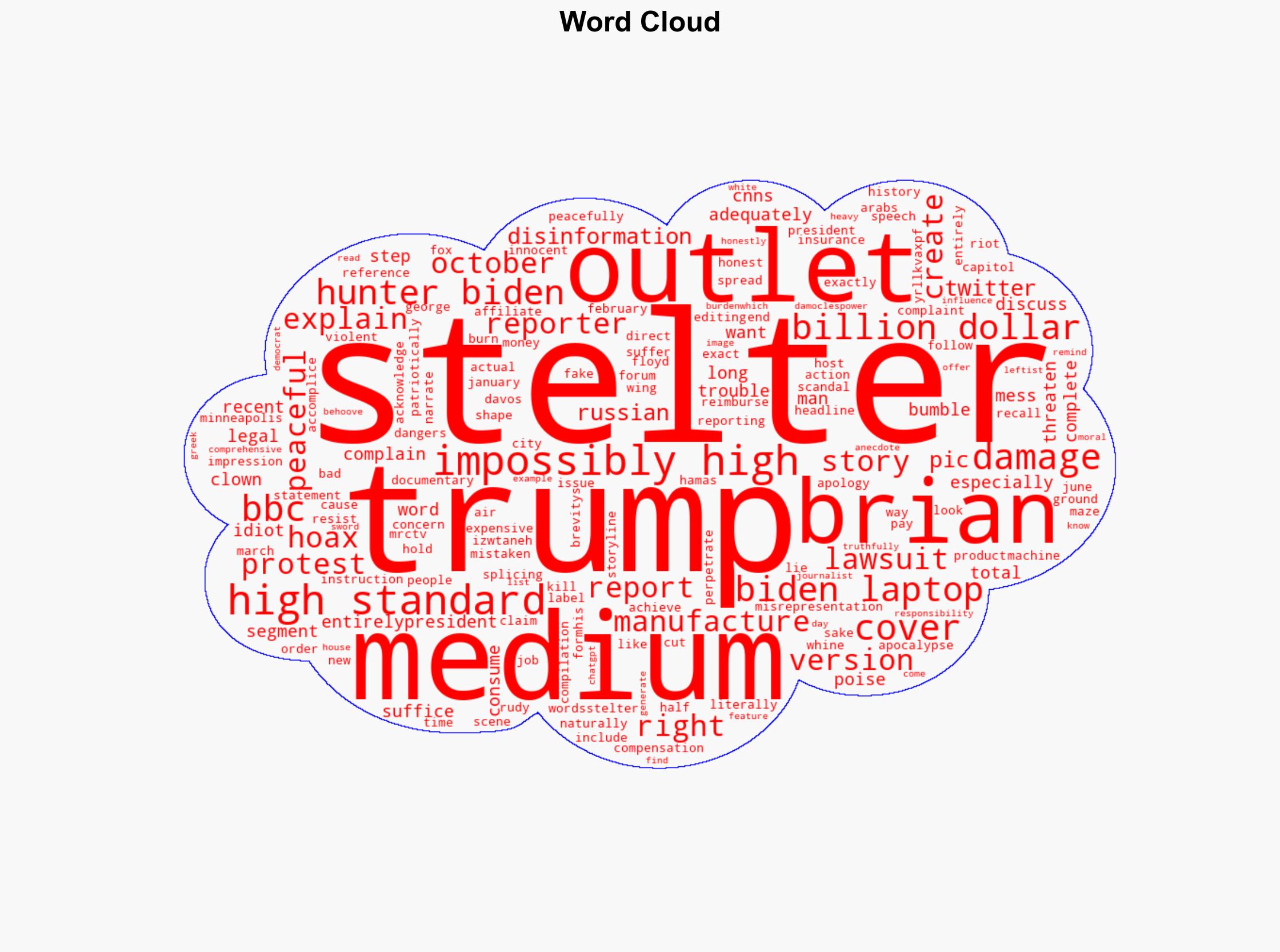Brian Stelter complains about impossibly high standard for outlets that want to cover Trump – Americanthinker.com
Published on: 2025-11-14
AI-powered OSINT brief from verified open sources. Automated NLP signal extraction with human verification. See our Methodology and Why WorldWideWatchers.
Intelligence Report: Brian Stelter complains about impossibly high standard for outlets that want to cover Trump – Americanthinker.com
1. BLUF (Bottom Line Up Front)
The strategic judgment is that Brian Stelter’s complaints about media standards reflect broader tensions in media credibility and political polarization. The most supported hypothesis is that Stelter’s comments are part of a broader narrative to challenge media accountability standards, with a medium confidence level due to the polarized nature of the source and potential bias. Recommended action includes monitoring media narratives for shifts in public trust and potential impacts on political discourse.
2. Competing Hypotheses
Hypothesis 1: Brian Stelter’s comments are a genuine critique of the media’s high standards, suggesting that these standards are selectively applied, particularly against outlets covering Trump.
Hypothesis 2: Stelter’s comments are strategically aimed at undermining the credibility of certain media outlets by suggesting bias and unfair treatment, thereby reinforcing a narrative of media manipulation.
Hypothesis 2 is more likely given the context of the source and the history of media discussions around Trump, which often involve claims of bias and manipulation.
3. Key Assumptions and Red Flags
Assumptions: The analysis assumes that the source is representative of broader media narratives and that Stelter’s comments are accurately portrayed.
Red Flags: The source’s potential bias and the inflammatory language used may indicate an attempt to manipulate perceptions. The lack of direct quotes from Stelter raises questions about the accuracy of the portrayal.
4. Implications and Strategic Risks
The ongoing debate over media standards and bias could exacerbate political polarization, leading to decreased public trust in media institutions. This could result in increased susceptibility to misinformation and disinformation campaigns, potentially impacting electoral processes and public policy debates.
5. Recommendations and Outlook
- Monitor media narratives for shifts in public trust and potential impacts on political discourse.
- Encourage media literacy initiatives to help the public critically evaluate media sources and claims.
- Best-case scenario: Increased media accountability and transparency lead to improved public trust.
- Worst-case scenario: Further erosion of media credibility contributes to heightened political polarization and social unrest.
- Most-likely scenario: Continued debates over media standards without significant changes in public trust levels.
6. Key Individuals and Entities
Brian Stelter, CNN, BBC, Donald Trump
7. Thematic Tags
Media Credibility, Political Polarization, Disinformation
Structured Analytic Techniques Applied
- ACH 2.0: Reconstruct likely threat actor intentions via hypothesis testing and structured refutation.
- Indicators Development: Track radicalization signals and propaganda patterns to anticipate operational planning.
- Narrative Pattern Analysis: Deconstruct and track propaganda or influence narratives.
Explore more:
Counter-Terrorism Briefs ·
Daily Summary ·
Methodology





